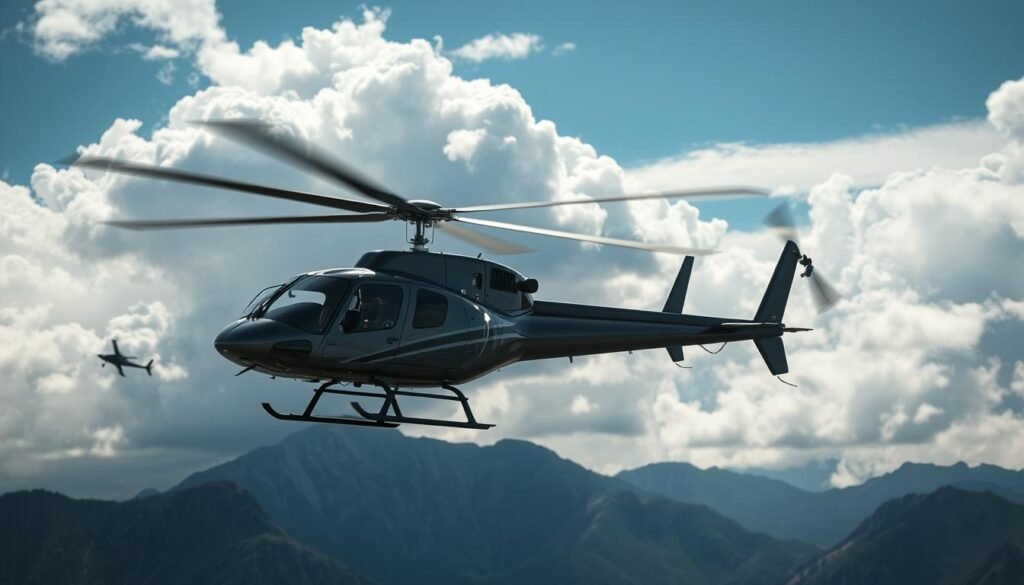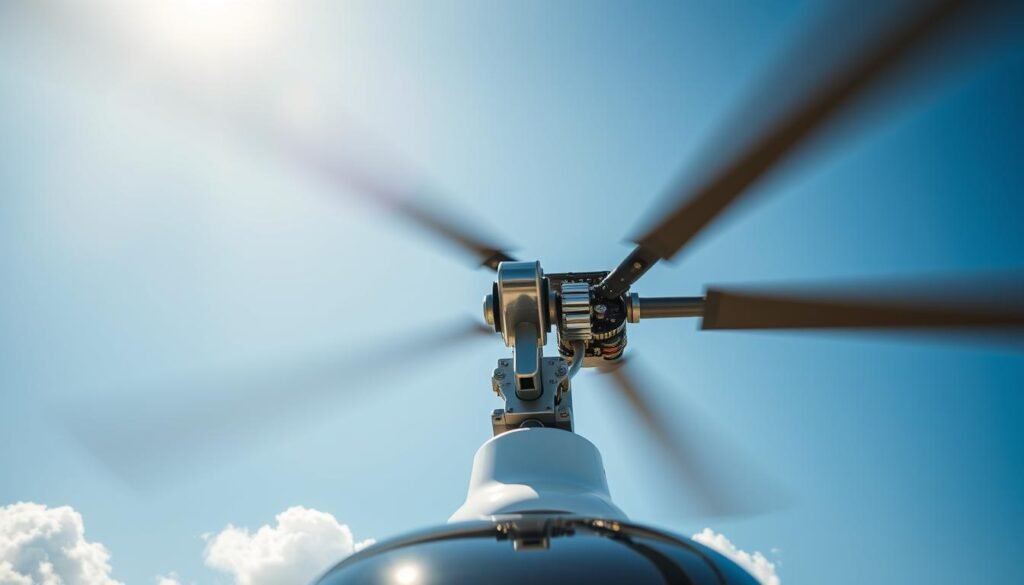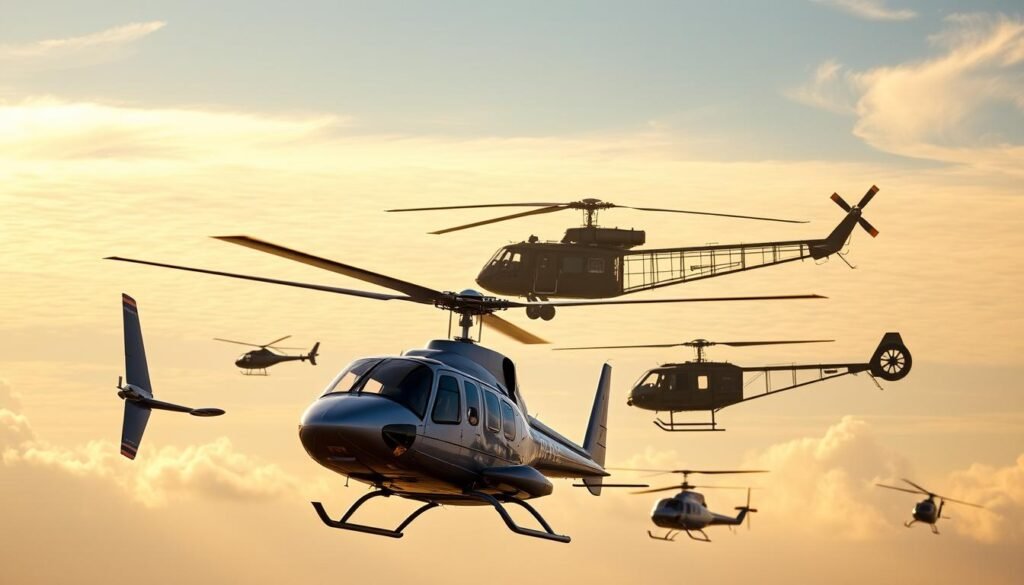Helicopters are unique among aircraft because they can hover, take off and land vertically, and move in all directions. These abilities are made possible by their rotary-wing design, which sets them apart from fixed-wing planes. But how exactly do helicopters achieve such remarkable control and flexibility in the air? In this article, we’ll break down the science behind vertical flight and explore how helicopters work.
The Basics: Lift and Thrust in Helicopters
At the core of every helicopter’s flight capabilities are two forces: lift and thrust.
- Lift is the upward force that allows the helicopter to rise into the air.
- Thrust is the forward force that moves the helicopter through the air.
In fixed-wing aircraft, lift is generated by the wings as air flows over them, and thrust is provided by an engine-driven propeller or jet engine. However, helicopters generate lift and thrust in a very different way: through the rotor blades.
The Main Rotor: Creating Lift and Control
The key component of a helicopter is its main rotor, a set of long blades that rotate around a central hub. These blades act like wings, but instead of moving through the air as a plane does, the rotor blades spin rapidly to generate lift.
The main rotor consists of several parts:
- Rotor blades: Shaped like wings, they generate lift as they rotate.
- Hub: The central part of the rotor system that connects the blades to the rotor mast.
- Swashplate: A mechanical device that adjusts the pitch (angle) of each rotor blade to control movement.
When the pilot increases the collective pitch, the angle of all the rotor blades changes, increasing lift and causing the helicopter to rise. Similarly, decreasing the collective pitch reduces lift, allowing the helicopter to descend. The cyclic pitch allows the pilot to tilt the rotor in any direction, which moves the helicopter forward, backward, or sideways.
Tail Rotor: Stabilizing the Helicopter
One challenge with helicopters is that the spinning main rotor creates torque, a rotational force that causes the body of the helicopter to spin in the opposite direction of the rotor. To counteract this, most helicopters use a tail rotor, located at the back of the aircraft.
The tail rotor provides anti-torque control, preventing the helicopter from spinning uncontrollably. By adjusting the tail rotor’s pitch, the pilot can control the helicopter’s yaw (rotation around its vertical axis), allowing the helicopter to turn left or right.
Hovering: The Ultimate Control
One of the helicopter’s most unique abilities is hovering—the ability to stay in one spot in the air. While planes need constant forward motion to stay airborne, helicopters can remain stationary by balancing lift and thrust precisely.
To hover, the pilot must maintain:
- Constant lift: The rotor blades generate enough lift to counteract the weight of the helicopter.
- Neutral thrust: No forward or backward movement, allowing the helicopter to remain stationary.
- Stability: The tail rotor and cyclic pitch adjustments keep the helicopter level and prevent unwanted rotation or drift.
Hovering requires constant adjustments from the pilot, making it one of the most challenging aspects of flying a helicopter.
Autorotation: Gliding Without Power
A unique feature of helicopters is their ability to land safely even if the engine fails. This is done through a process called autorotation. In autorotation, the helicopter uses the air moving up through the rotor blades (instead of the engine powering them) to slow its descent and control its landing.
During autorotation:
- The collective pitch is lowered, reducing drag and allowing the rotor blades to spin freely.
- Air passing through the rotor blades causes them to keep spinning, maintaining lift.
- The pilot controls the helicopter’s descent and can perform a safe landing, even without engine power.
Helicopter Controls: The Pilot’s Tools
Pilots control a helicopter’s flight through three primary controls:
- Collective: Adjusts the pitch of the main rotor blades collectively, increasing or decreasing overall lift, causing the helicopter to rise or descend.
- Cyclic: Changes the pitch of each rotor blade individually as it rotates, allowing the helicopter to move forward, backward, or sideways.
- Anti-torque pedals: Control the pitch of the tail rotor, allowing the pilot to control the helicopter’s yaw (left-right rotation).
These controls allow the pilot to manipulate the helicopter’s position, direction, and speed with incredible precision.
Advanced Technologies in Modern Helicopters
Today’s helicopters are equipped with advanced technology to improve safety and performance. These include:
- Autopilot systems: Helping pilots maintain stability and control in challenging conditions.
- Composite materials: Used to build lighter and stronger rotor blades, improving fuel efficiency and performance.
- Fly-by-wire systems: Replacing mechanical linkages with electronic controls for more precise and responsive handling.
These advancements have made helicopters safer, more efficient, and more capable than ever before.
Conclusion: The Science of Vertical Flight
Helicopters are engineering marvels, combining sophisticated mechanical systems with aerodynamics to achieve vertical flight. The ability to hover, take off without a runway, and maneuver in tight spaces makes helicopters uniquely versatile in the world of aviation. From military operations to medical evacuations and tourism, the helicopter’s remarkable design and capabilities continue to expand its role in modern society.
Related Articles
- How Helicopters Revolutionized Emergency and Rescue Operations
- Helicopter Milestones: Important Breakthroughs in Aviation History
- Iconic Helicopters That Shaped the Future of Aviation
- The Role of Helicopters in World War II and Beyond
More from This Category
- Top 10 Helicopter Facts You Probably Didn’t Know
- Military Helicopters Through History: Key Models and Their Impact
- How Helicopters Work: The Science Behind Vertical Flight
- Who Invented the Helicopter? A Look at the Pioneers Behind Rotary Flight
- Helicopter Evolution: How Rotary-Wing Aircraft Changed Aviation Forever
- The Fascinating History of Helicopters: From Invention to Modern Aviation



